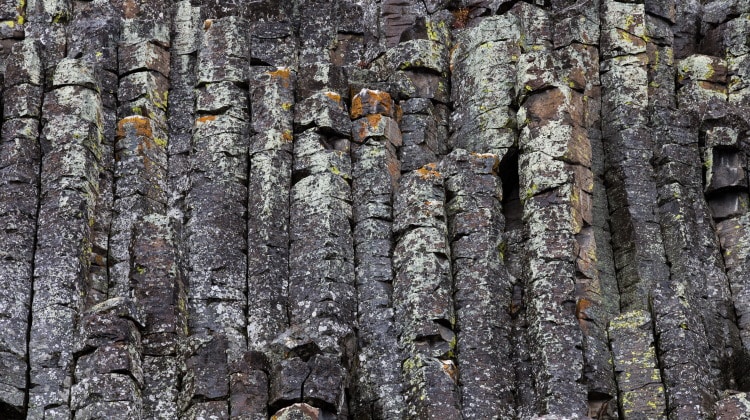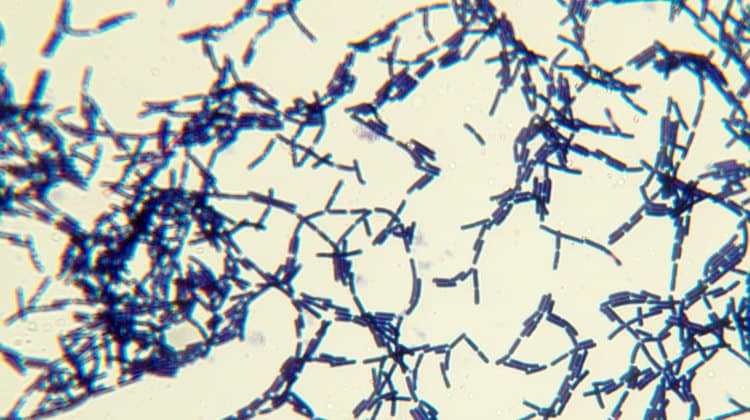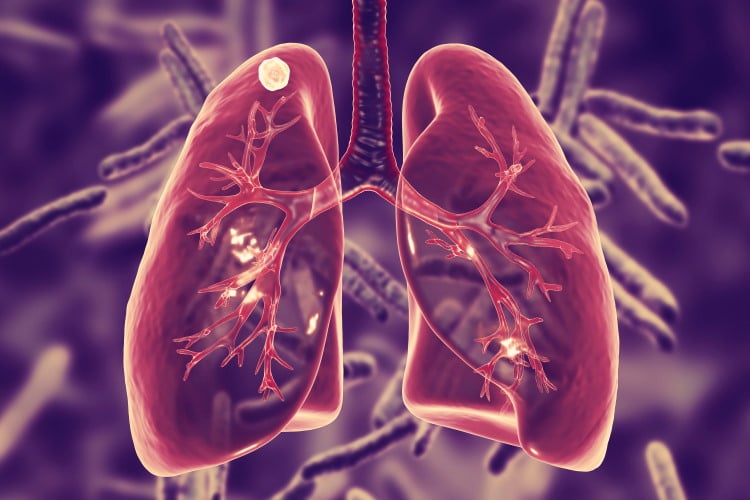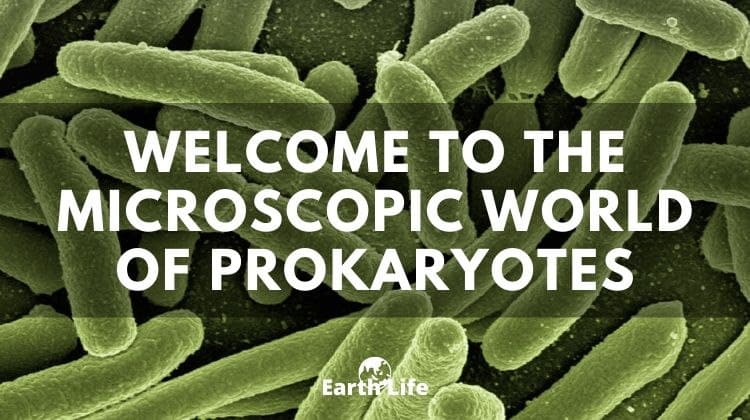The Euryarchaeota: Nature’s Lovers of Salt
The Euryarchaeota are a diverse group of organisms that live in extremely saline or salty environments.
I.e., originally salt lakes, but now also on the surfaces of highly salted foods such as fish and meats.
These organisms are called extreme halophiles.
This description means not only that they can live in highly saline environments, but that they require a high concentration of salt in order to live at all. In practice, this means solutions with a minimum of 9% salt = 1.5M. Most species in this category prefer 12-23% salt solutions (2-4M) and can survive in saturate salt solutions i.e., 32% or 5.5M.
Naturally, extremely saline environments suitable for organisms such as these are quite rare.
They occur where sea water is trapped and allowed to evaporate. As the water level decreases so the salt concentration increases. All known extremely Halophilic Archaea stain gram negative, do not form resting stages or spores and reproduce by binary fission.
There are 10 genera and 20 species of Extreme Halophiles, 5 of these genera are monotypic:
Halobacterium; Halobaculum; Natrosobacterium; Natrialba; Natrosomonas.
The other genera are: Natrarococcus (2 species); Haloarcula (2 species); Halococcus (2 species); Haloferax (4 species); Halorubrum (5 species).
Methane Producing Archaea
Nearly half (44.5%) of the known species of Archaea are unique in being capable of producing methane as part of their normal biochemical pathways.
Organisms that produce methane are called methanogenic and the act of producing methane is called methanogenesis.
Methanogens are the most common and widely dispersed of the Archaea, being found in anoxic sediments and swamps, lakes, marshes, paddy fields, landfills, hydrothermal vents and sewage works as well as in the rumen of cattle, sheep and camels, the cecae of horses and rabbits, the large intestine of dogs and humans, and in the hindgut of insects such as termites and cockroaches.
It is true that all the methane passed into the atmosphere from the sorts of animals mentioned above is all the work of a few dozen species of methanogenic Archaea living within them.
These amazing and ancient organisms are capable of converting at least 10 different substrates into methane, though any individual species will only by able to use 2 or 3 of these:
| CO2 + H2 | Carbon dioxide + Hydrogen gas |
| HCOO– | Formate |
| CO + H2 | Carbon monoxide + Hydrogen gas |
| CH3OH | Methanol |
| CH3NH3+ | Methylamine |
| (CH3)2NH2+ | Dimethylamine |
| (CH3)3NH+ | Trimethylamine |
| CH3SH | Methylmercaptan |
| (CH3)2S | Dimethylsulphide |
| CH3COO– | Acetate |
An example reaction is:
CO2 + 4H2 gives CH4 + 2H2O (= -131Kj
Carbon dioxide + Hydrogen gives Methane + Water
The following table lists the different genera of Methanogenic Archaea
| Methanogenic Archaea | Species | Form |
| Methanobacterium | 19 | Long Rods |
| Methanobrevibacter | 7 | Short Rods |
| Methanosphaera | 2 | Cocci |
| Methanothermus | 2 | Rods |
| Methanococcus | 11 | Irregular Cocci |
| Methanomicrobium | 2 | Short Rods |
| Methanogenium | 11 | Irregular Cocci |
| Methanospirillium | 1 | Sprilla |
| Methanoplanus | 3 | Plate-like |
| Methanocorpusculum | 5 | Irregular Cocci |
| Methanoculleus | 6 | Irregular Cocci |
| Methanosarcina | 8 | Irregular Cocci in groups |
| Methanolobus | 8 | Irregular Cocci in groups |
| Methanohalobium | 1 | Irregular Cocci |
| Methanococcoides | 2 | Irregular Cocci |
| Methanothrix | 4 | Long Rods/filaments |
| Methanopyrus | 1 | Rods in chains |
Thermoplasmatales
This is a small group of extreme acidophile organisms.
Containing 4 species in 2 genera, they are unusual in their ability to tolerate acid conditions.
The two Picrophilus species are the most highly acidophilic organisms known to science. They have an optimal pH requirement of 0.7, can still grow at a pH of -0.06 and die at pH values of less than 4.0. Both Picrophilus species were found in acid solfatoras in Japan.
The two species of Thermoplasma grow optimally at pH 2.0 or 55°C.
Thermoplasma species are also very unusual in that they do not have a cell wall, though they still have a cell membrane – or else they wouldn’t be a cell.
T. volcanium has been isolated from a number of solfatoras around the world. For those who want to know, the cell membrane of Thermoplasma is composed of a Tetra-ether lipid with mannose and glucose units. It is called lipoglycan and is very like a lipopolysaccharide.
Hyperthermophiles
As they name suggests this last small group of the Euryarchaeota are organisms that specialise in living in extremely hot environments such as hydrothermal vents, on the sea bed and in hot springs.
The five key genera in this group are Thermococcus, Pyrococcus, Methanopyrus, Archaeoglobus and Ferroglobus.
Though living in hot water is not that unusual for prokaryotes, the organisms in this group are all hyperthermophiles and have an optimum living temperature of 80°C or greater.
Methanopyrus is a rod-shaped methanogenic organism found in hydrothermal vents.
Thermococcus and Pyrococcus (literally ‘fireball’) are both obligate anaerobic chemoorganotrophs, which means that they live on organic molecules in environments where there is no oxygen.
Thermococcus lives at 70-95°C, whilst Pyrococcus lives at temperatures from 70-100°C.
Note that under pressure, i.e., underground or deep in the sea, water can remain liquid at temperatures greater than 100°C because the boiling point of any liquid is dependent on pressure.
Archaeoglobus is unique among the Archaea in being a true sulphate reducer – reducing SO42- to H2S. It occurs in hot marine sediments near hydrothermal vents. It is an irregular spheroid shape and has a similar optimum living temperature to the other hyperthermophiles.
Ferroglobus is an iron oxidising-nitrate reducing minibeast of shallow marine hydrothermal vents (Fe2+ to Fe3+, NO3- to NO2- and/or NO). Ferroglobus lives in anoxic (oxygen free) environments and has an optimum growth temperature of 85°C.
The recent discovery that Ferroglobus will reduce iron to Fe3+ under these conditions has caused scientists to rethink some of their ideas concerning the occurrence of Fe3+ in ancient sedimentary rocks.
Previously it was thought that this was the work of cyanobacteria.





